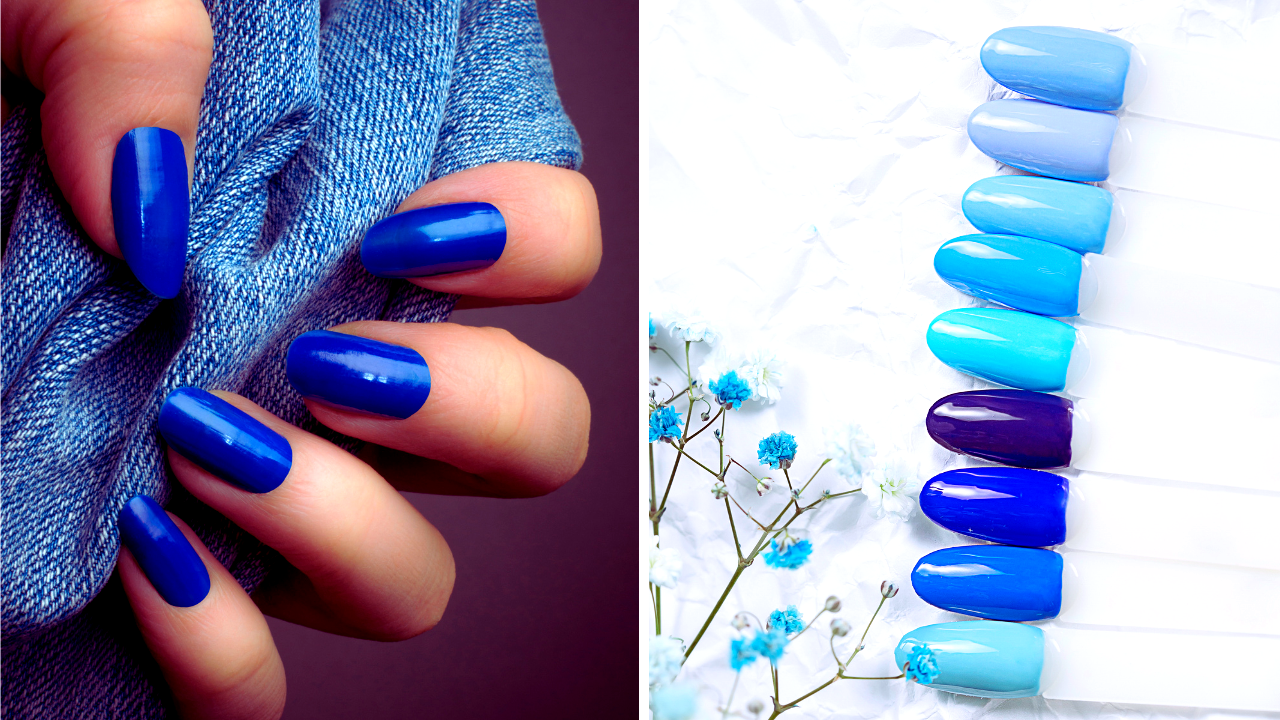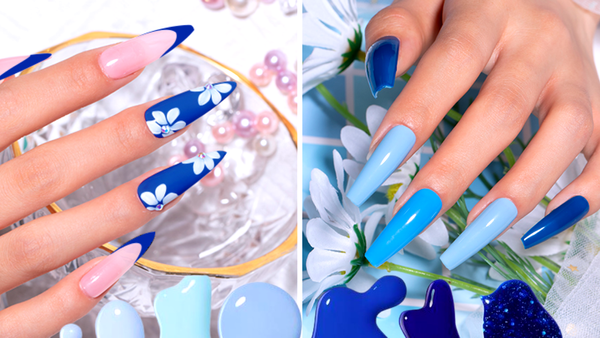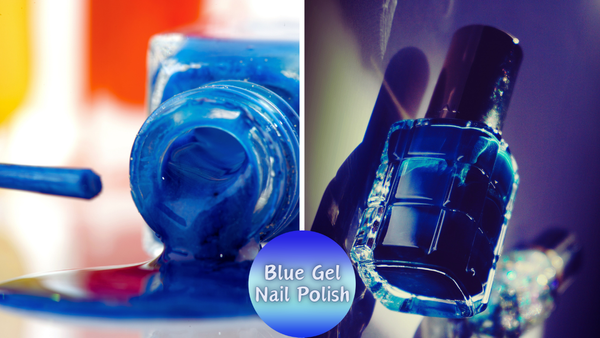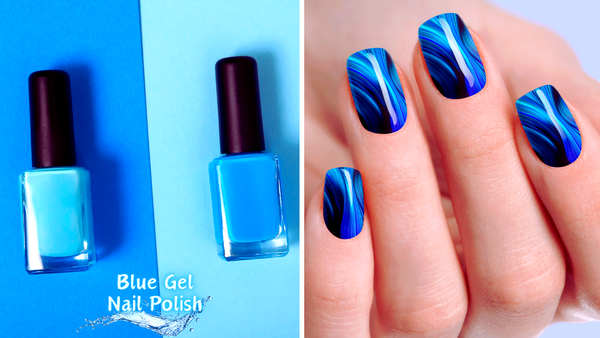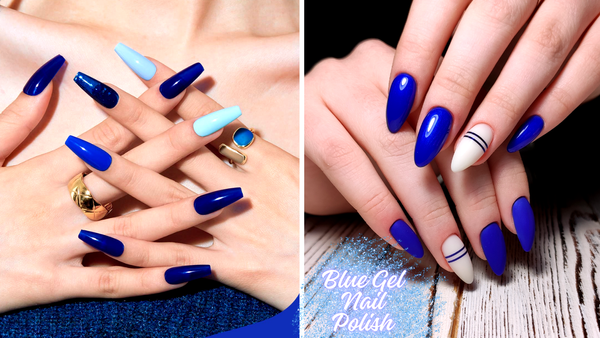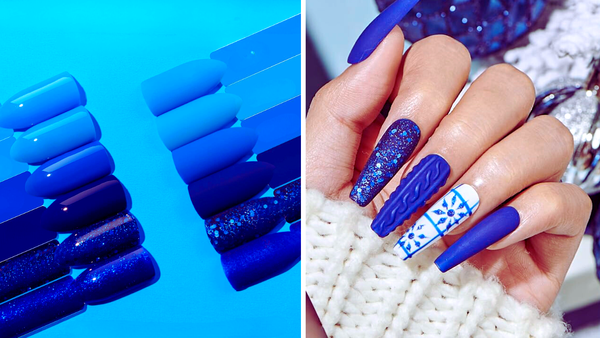Key Takeaways:
- Understand the fundamental differences between blue gel nail polish and regular nail polish.
- Discover the unique application and removal processes of gel polish.
- Learn about the longevity and durability that gel manicures offer.
Nail polish has been a cornerstone of beauty and self-expression for centuries, evolving from its ancient origins to the dazzling array of options available today. Among the most popular advancements in nail technology is the introduction of gel nail polish, a product that has revolutionized how we think about manicures. In this article, we'll dive deep into the world of blue gel nail polish and how it stands out from its regular nail polish counterpart.

The Composition Conundrum: Gel vs. Regular Nail Polish
When it comes to distinguishing how blue gel nail polish differs from regular nail polish, the composition is a primary factor. Gel polish is a blend of acrylic monomers and oligomers that bond when cured under UV or LED light, creating a hard, glossy layer on the nail. This curing process sets gel polish apart from regular nail polish, which dries naturally when exposed to air. The chemical makeup of gel polish gives it a durability that classic nail polish can't match, allowing it to resist chips and scratches for two to three weeks or even longer.
The Durability Debate: Why Gel Polish Lasts Longer
Durability is a significant advantage of gel polish over traditional nail polish. The curing process under a UV or LED lamp creates a bond much stronger than the one formed by the air-drying of regular polish. This means that gel manicures can withstand the rigors of daily life without the frequent touch-ups required by regular polish. For those who prefer gel polish, this means more time enjoying the timeless elegance of their manicure and less time worrying about unsightly chips.
Application: A Tale of Two Techniques
Applying gel polish is an art that requires precision and care. Unlike regular polish that can be applied at home with minimal fuss, gel polish requires a professional nail technician for the best results. The process involves preparing the nail beds, applying a thin base coat, followed by the gel color, and then a top coat. Each layer must be cured under an LED or UV light to dry gel polish properly. This meticulous application ensures a glossy finish and a manicure that can last significantly longer than a regular manicure.

The Removal Rundown: Gel vs. Regular Polish
Removing gel nails is where many see a stark contrast to regular polish. While regular nail polish remover can strip away classic polish with ease, gel polish necessitates a more involved removal process. This typically involves soaking the nails in acetone, often wrapped in cotton balls and foil, to break down the gel's strong adhesive properties. It's a process that takes time and, if done incorrectly, can damage the natural nails. This is a crucial consideration for those weighing the pros and cons of a gel polish manicure versus a regular one.
The Evolution of Nail Fashion: From Classic Shine to Timeless Elegance
Have you ever wondered how blue gel nail polish has revolutionized the nail fashion scene? Unlike classic polish that simply air dries, gel polish requires more finesse. It's a dance between chemistry and artistry, where UV or LED light plays a pivotal role. The curing process transforms the gel from a liquid to a solid state, not only giving it that glossy finish but also ensuring it lasts a bit longer than your traditional nail polish. This advancement in nail technology has allowed for a shift from the classic shine of yesteryears to the timeless elegance that gel polish offers today.
The difference between regular nail polish and gel polish doesn't end in the drying process. Regular manicures, while charming in their own right, often lack the durability that a gel manicure boasts. With gel polish, the fear of chipping is significantly reduced, allowing for a pristine look that can withstand the rigors of daily life. This durability is a game-changer for those who prefer gel polish over ordinary nail polish. It's not just about looking good for a day or two; it's about maintaining that perfect manicure for two to three weeks without constant touch-ups.
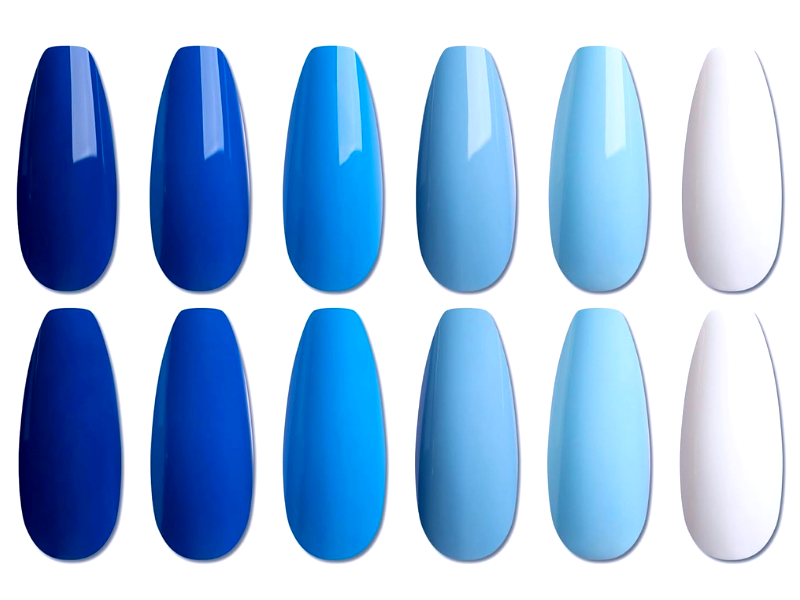
The Artistic Realm of Gel Nails: Nail Art and Personal Expression
Gel polish isn't just about longevity; it's a canvas for creativity. Nail art has soared to new heights with the advent of gel polishes. The thick consistency and the ability to cure in layers mean that professional nail technicians and nail art enthusiasts can create intricate designs that were once impossible with regular nail polish. From stunning gradients to detailed patterns, the possibilities are endless. The blue hues of gel polish, in particular, provide a vibrant backdrop for any nail art masterpiece, ensuring each nail is a statement piece reflecting personal style and preference.
But let's not forget the DIY aficionados who are taking their nails into the realm of gel polish applications. With the right tools, such as an LED or UV lamp and a steady hand, applying gel polish at home has become a form of self-care and expression. It's not just about the instant gratification of a beautiful set of nails; it's about creating something uniquely yours. Whether it's a simple coat of blue gel polish for that pop of color or an elaborate design that showcases your artistic flair, gel polish manicures are a way to make your personal preferences shine.
The Health Perspective: Keeping Nails Healthy
Many people are concerned about maintaining healthy nails, and the type of polish used can play a role. Gel manicures, when applied and removed correctly, can be worn without causing significant damage to the natural nail. However, the frequent use of UV light has raised some concerns, prompting many to opt for LED lamps instead. Regular nail polish, on the other hand, is less binding and can be removed more gently, potentially posing less risk to the nail bed and cuticle.
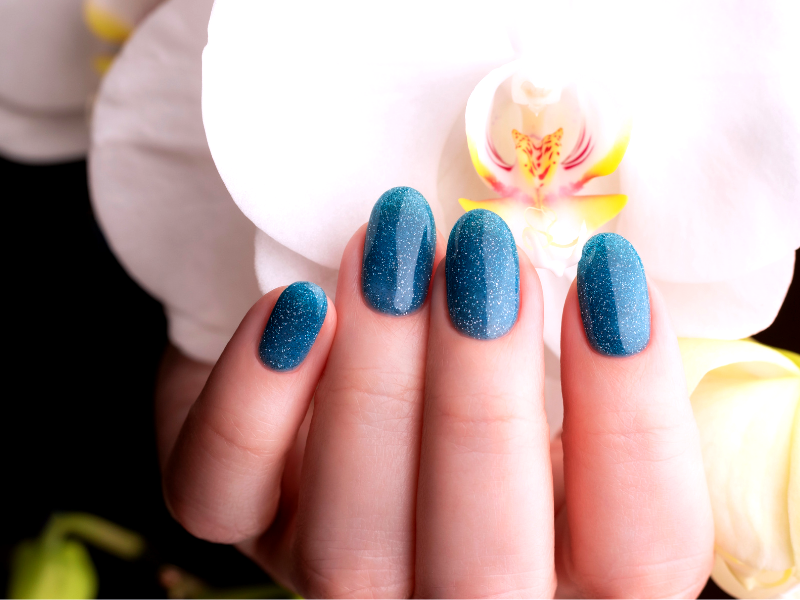
The Aesthetic Angle: Shine, Color, and Texture
Aesthetic preferences often guide the choice between gel and regular polish. Gel polish is renowned for its high-gloss finish and rich color that doesn't fade. The only difference in color vibrancy might come from personal preference, as some may find the classic shine of regular polish more appealing. Additionally, gel polish tends to have a thicker texture due to its composition, which can give nails a more pronounced look compared to the thinner layers of regular polish.
Cost Considerations: Investment in Longevity
Cost is an important factor when choosing between gel and regular polish. Gel manicures typically cost more due to the specialized products and equipment required, as well as the professional application. However, the investment might be justified by the longevity and durability of gel polish, which can make it a more economical choice in the long run for those who prefer a manicure that lasts without the need for frequent salon visits.
The Convenience Factor: Time and Effort
Convenience plays a significant role in the decision-making process. Gel polish manicures require a visit to the salon and take longer to apply and remove than regular polish. For those seeking instant gratification and the ability to change nail color on a whim, regular nail polish might be the preferred option. It offers the flexibility to air dry naturally and can be changed easily at home.
Personal Preferences: The Ultimate Decision-Maker
Ultimately, choosing between blue gel nail polish and regular nail polish boils down to personal preferences. Some may value the long-lasting nature and robustness of gel polish, while others might prioritize the ease of application and removal offered by regular polish. Personal lifestyle, the value placed on salon visits, and the importance of nail health are all factors that influence this decision.
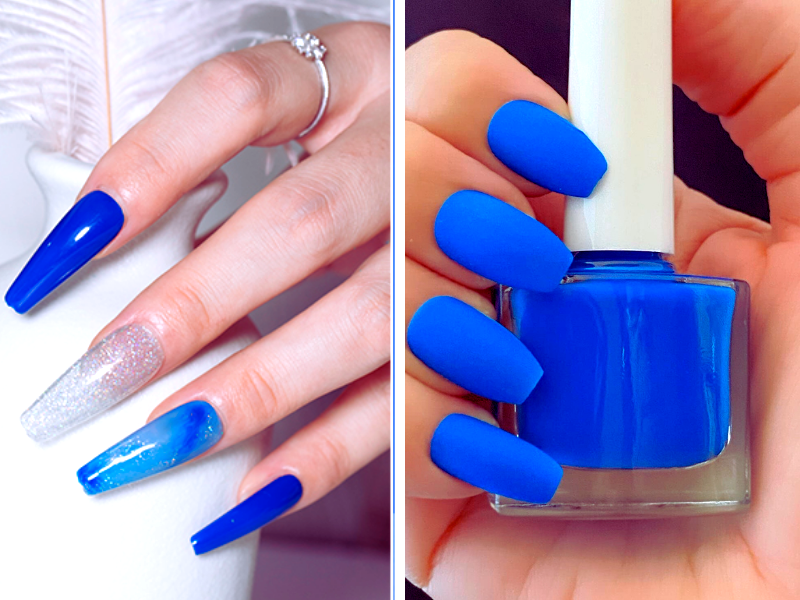
Summary
Blue gel nail polish and regular nail polish offer distinct experiences, from removal application and durability to aesthetics. Gel polish stands out for its long-lasting wear, requiring professional application and a specific removal process. Regular polish, while not as durable, offers ease of use and a gentler approach to nail care. The choice between the two often comes down to personal preference, lifestyle, and the value of the manicure's longevity versus convenience.
FAQ Section
Can I apply blue gel nail polish at home?
Yes, you can if you have the necessary equipment, such as a UV or LED lamp, and follow the correct application process. However, for best results and to ensure the health of your nails, it is recommended that you have gel polish applied by a professional nail technician.
How often should I take a break from gel manicures to keep my nails healthy?
It's generally recommended to take a break from gel manicures every two to three months to allow your natural nails to breathe and recover. During this break, focus on nail care, such as using cuticle oil and keeping your nails hydrated.
Is blue gel nail polish more damaging to nails than regular polish?
Blue gel nail polish is not inherently more damaging than regular polish when applied and removed correctly. However, improper removal or overuse of gel polish without breaks can damage the nails. It's important to follow proper care guidelines and give your nails time to recover between gel manicures.
